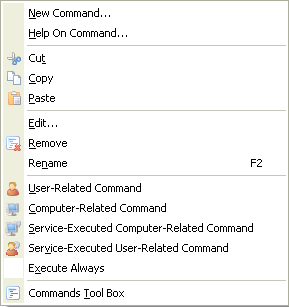Traveling User Support (TUS)
Windows offers the possibility saving the user-specific profile on a server. If the user relocates to a different computer, the familiar program icons and links will be made available on the new computer.
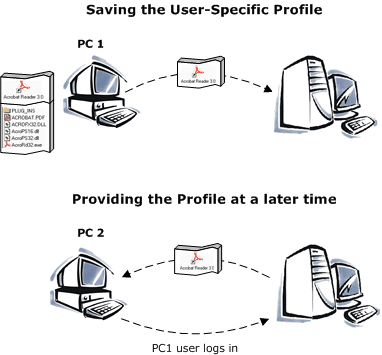
However, the installed applications for execution will not be present on the other computer, the icons and links have nothing to refer to. Windows does not support program tracking.
Ivanti DSM offers full support for the Traveling user. The Traveling User Support feature guarantees that users are able to use their applications even when working on different computers.
As a prerequisite for utilization of Traveling User Support, server-based profiles must be used for the users:
- Through the roaming profile, the user receives the user portion of the installation: links and user-specific settings.
- The associated application is installed for the user from the depot, unless it is already present on the computer. The DSM Client can determine this from the user information logged in the registry.
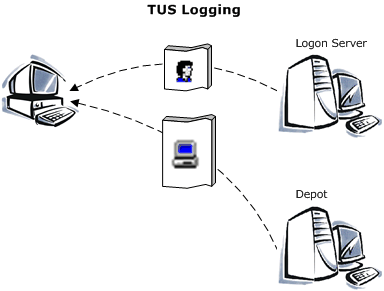
Traveling User Support is beneficial:
- when a user works on different computers and
- when not all users work with the same software, but different applications are to be used by different users.
The internal division of the script into a user portion and a computer portiont is a requirement for Traveling User Support:
- Classification of the commands within a package into user-related and computer-related commands
- Separate
logging of the execution of a package in the registry (HKEY_CURRENT_USER,
HKEY_LOCAL_MACHINE).
The logging information in the registry allows the DSM Client to recognize which of the two portions has already been executed and then only installs the missing portion.
The DSM Client logs the execution of the user and computer related part of the installation under \Software\NetSupport\NetInstall\
InstalledApps\<PackageID>.
At initial installation time, both the user portion and the computer portion are installed. The user-specific component of the installation is logged in the registry as user-related (in the HKEY_Current_User branch). The user portion is copied with the server-based user profile onto the logon server.
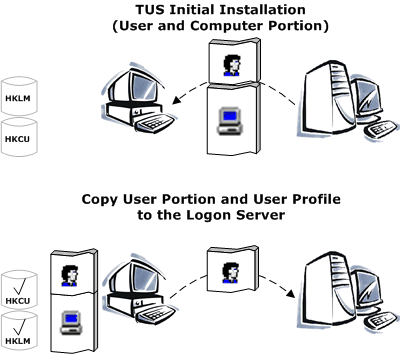
If the user logs onto a different computer, he receives the user portion of the installation with the roaming profile.
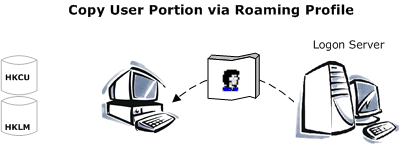
If the computer portion of the installation is still missing on the computer, it is supplied automatically (see the following graphic).
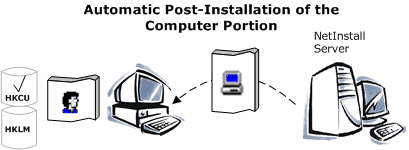
If a different user logs onto this computer, only the user portion will be post-installed.
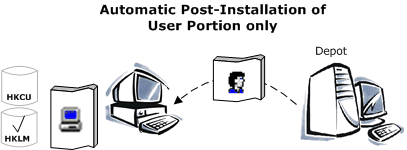
Automatic Classification of Commands
When you record packages using the NetInstall Spy, the commands are classified automatically, normally you do not need to change this classification. You can see the logging mode for each individual command from the script view of the package. The icons are displayed to the left of the commands:
![]() User-related command
User-related command
 Computer-related command
Computer-related command
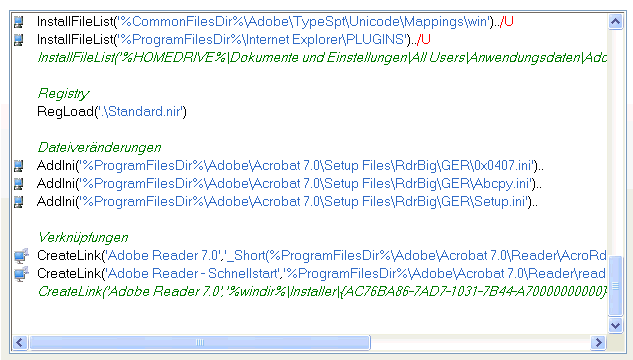
Local Security Handling is additionally required to provide complete support for the traveling user. A command is executed either by the Installer or by the DSM Runtime Service:
 Computer-related command, executed
under user account
Computer-related command, executed
under user account
 Computer-related command, executed
by the DSM Runtime Service
Computer-related command, executed
by the DSM Runtime Service
Manual Classification
The complex rule structure underlying the automatic classification of commands can only be effective if the information concerning local security is relevant. In some situations, it may be necessary to classify commands manually. You can also manually exclude classifiable commands from classification using the Execute always option.
